

Prior Episodes | 7945 (32 BBY) | Next Episodes
Continuity & Analysis
Star Wars - Episode I - The Phantom Menace (1999)
Turmoil has engulfed the Galactic Republic. The taxation of trade routes to outlying star systems is in dispute.
Hoping to resolve the matter with a blockade of deadly battleships, the greedy Trade Federation has stopped all
shipping to the small planet of Naboo. While the Congress of the Republic endlessly debates this alarming chain
of events, the Supreme Chancellor has secretly dispatched two Jedi Knights, the guardians of peace and justice
in the galaxy, to settle the conflict...
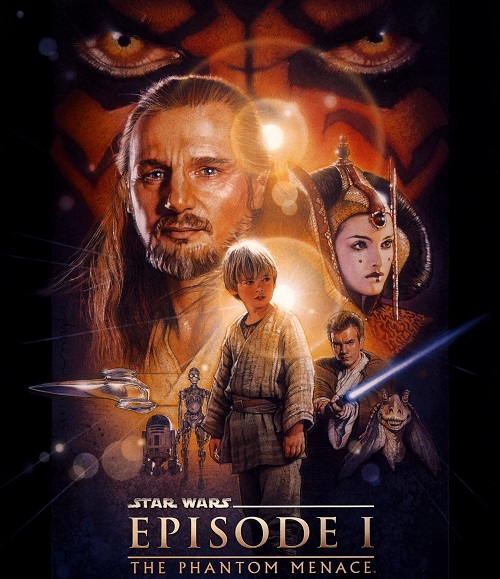

CONTINUITY
Episode I takes place ten years before Episode II, and thirty-two years before Episode IV.
The planets Naboo and Coruscant are seen for the first time. Three worlds are seen in the film:
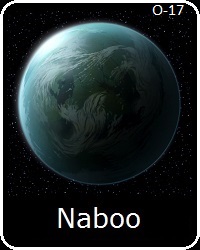


The film takes place over the course of 9 days. Day 1 - Arrival at Naboo --> Gungan council. Day 2 - Leaving the Gungans --> Testing Anakin's blood.
Day 3 - Anakin finishes his racing pod. Day 4 - Pod race --> Leaving Tatooine. Day 5 - Arrival on Coruscant --> Anakin tested by the Jedi Council.
Day 6 - Leaving Coruscant --> Alliance with the Gungans. Day 7 - The Battle of Naboo. Day 8 - Jedi Council on Naboo --> Qui-Gon's funeral.
Day 9 - Celebration Parade.
- The Judicial Forces are the only standing army of the Republic, and have been for over 900 years since the formation of the current incarnation of the Galactic
Republic. They are a small but effective fighting force, and as seen in the opening scene of the film, function principally to augment and reinforce the Jedi, who
lead any Republic efforts which have devolved into open conflict. As seen in other canon, the Republic does have a small but effective Navy in this time period.
- Obi-Wan senses a disturbance in the Force, which is the shadow of the influence of Darth Sidious over the Trade Federation and this crisis, and he senses
this disturbance just as Sidious is communicating with the bridge of the ship they are on. This escapes Qui-Gon, either due to the normal difficulty in
seeing the dark side, his focus on the moment, the clouding of the Force by the dark side that is beginning to build, or some combination of these factors.
- Obi-Wan is seen to be a Padawan at age twenty-five, and is later said to be ready to take the trials to become a Jedi Knight. While not all students are ready
at the same time, it is clear that all Jedi spend more or less than a decade as Jedi Padawans due to the rate the Jedi feel is necessary for learning skills,
maturing as individuals. The Jedi also hold back advancement, knowledge of the force, and other aspects from students until they are deemed ready.
The power of a skilled Jedi is evident by their ability to swiftly outclass greater numbers of opponents. Their limitations are also made clear. Jedi are mortal,
fallible, and can be contained or even defeated by certain tactics, situations, and technologies. Their lightsabers, powerful and versatile as they are,
aren't unstoppable either, as there are certain metals which can resist, slow, and even stop lightsabers. These metals are also rare and usually heavy.
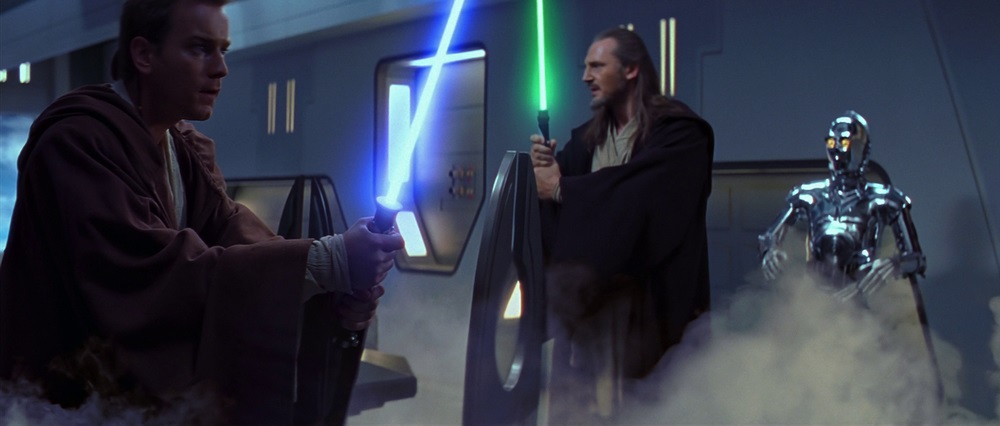
- In Episode V, Obi-Wan calls Yoda "the Jedi Master who instructed me," and yet is seen to have been Qui-Gon's apprentice. In Episode II, Yoda is shown to be
instructing entire classes of Jedi Initiates, and throughout The Clone Wars series is built up as having taught many promising students for a time before
that student was assigned as a Padawan for field training. In 'Voices' (S6E11), Obi-Wan says to members of the Jedi Council that "all of us have apprenticed
to Master Yoda," suggesting that a Jedi may have several teachers at different stages of their development.
- The Trade Federation is the galaxy's largest trade franchise, and is an organization based in Neimodian starsystems which has become far more powerful than
the various Neimoidian planets are. Neimoidians dominate the Federation, and the Neimodian people and their planets are usually considered synonymous
with the Trade Federation. Neimoidia and its many colony planets have been part of the Republic for over 20,000 years, and are deeply integrated in
the interstellar culture of the Core. The Quellor Sector, where Cato Neimoidia is found, seems to be represented in the Senate by a Federation appointee.
- Sidious' plan was for the Trade Federation to blockade the planet long enough to use the crisis to allow his alter-ego Palpatine to be elected Chancellor,
something which Sidious has ensured by means of his many secret allies in the Senate. When Chancellor Valorum secretly dispatches two Jedi Knights to
settle the conflict, Sidious says that "this turn of events is unfortunate. We must accelerate our plans. Begin landing your troops." To prevent the Jedi
from forcing a settlement, and to ensure the crisis escalates, it will now be necessary to invade the planet at the beginning of the blockade, and have
the Jedi eliminated. Gunray is rightly concerned that it is a violation of interstellar law to invade a sovereign planet and Republic member world, but
Sidious assures him that he "will make it legal," which is probably a true statement of Sidious' influence over the Senate, but is likely simply to allay
Gunray's fears. Ultimately, Sidious will be able to use the Federation for future schemes even if Gunray and Haako are ousted after these events, as
what matters most is elevating Palpatine to Chancellor. Having taken the planet and cut off communications, Sidious has the Senate "bogged down in
procedures," and tells Gunray, "they will have no choice but to accept your control of the system." Gunray has obviously been promised control of
Naboo for his participation in this scheme, and Sidious clearly also hopes this move will succeed, as this will serve as a warning alarm to many other
worlds in the Rim, thus facilitating and speeding the growth of his intended Separatist movement in the near future.
Main Article: Darth Sidious and The Plan
- Dioxis a poison gas that can be used as a lethal security measure.

When Qui-Gon and Obi-Wan are attacked by two Droideka 'destroyer' droids with shield generators, they retreat.
They do so by using the ability known as 'Force speed' or 'Force sprint', which shows them zip from view only
to see them far down a corridor. This is not the only example of this we ever see, but it is rarely shown. Why
don't the Jedi use this ability more often? Probably because the writers need them to get captured at times,
and being able to escape even easier than they often do would take some of the fun out of it. No matter the
reason, there are more than a few examples in future shows or movies where Jedi should have 'Force sprinted'.
- Qui-Gon and Obi-Wan recognize and identify the battle droids and the droideka destroyer droid, showing that while they may be relatively advanced
models, these types of droids are known to be available for sale, and are at times run into by the Jedi. The scale of the Federation army, as well as
the quality of the battle droids, seem to both be more recent developments, as in having occurred over the last decades, or at most the last century.
Obi-Wan does seem surprised that the destroyers have the shield generators, which may represent cutting-edge developments in battle droids.
- Naboo is a pleasant and verdant planet located in the Chommell Sector, in the Trailing Sectors of the Mid Rim. Naboo is rich in native life and in water,
which also makes it agriculturally viable. It is the homeworld of the amphibian Gungans, and was colonized by settlers from the Republic, principally
Humans, starting about 4000 years prior to these events. Ruins from an even earlier period of colonization by an unknown spacefaring Reptilian
species can be seen on the planet, often partially buried. This race seems to no longer be known in the galaxy, and are referred to locally as
the Elders. As seen in The Clone Wars 'Crisis on Naboo' (S4E18), Naboo has been a member world of the Republic since the year 7110 (867 BBY),
835 years before this film. In this time period, Naboo serves as the Chommell Sector's delegation in the Galactic Senate, representing Naboo,
35 other member worlds of the Republic, and over 40,000 planets with smaller populations within their jurisdiction. Theed is the capital city.
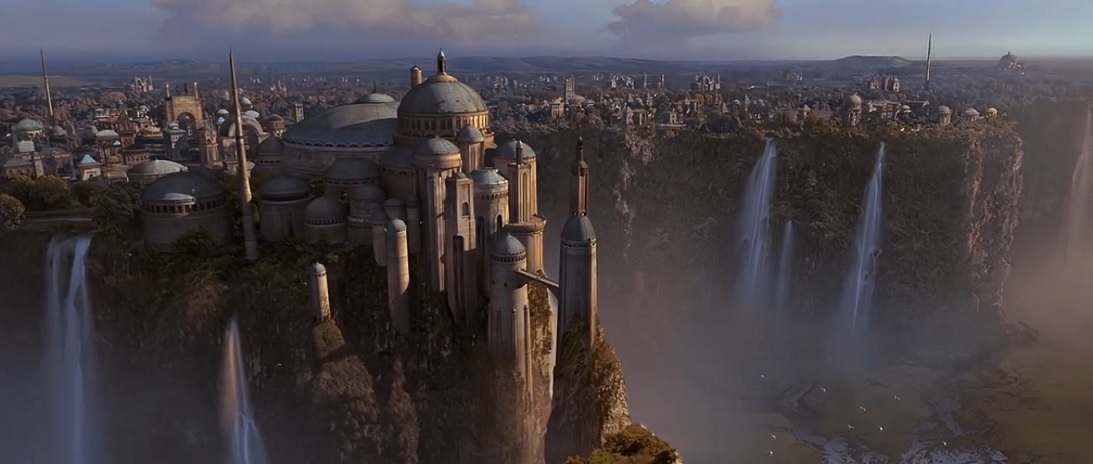
- Naboo as a planet, or its capital city of Theed, has a hyperspace communications "transmissions generator", which implies that communicating with
a planet as distant as Coruscant, and perhaps any world, requires a local transmitter-receiver. The conversation seems to imply there is only one central
transmitter for Theed, or perhaps all of Naboo. The Trade Federation battleships in orbit are able to cause a planet-wide communications disruption.
Later it is shown that hyperspace communications transmissions can be intercepted and/or traced to their source. The Jedi tell the Queen the message
from the Governor on Naboo is "bait to establish a connection trace", which shows that the sender of a message can be located by the receiver,
and that hyperspace messages can somehow find their way to their intended recipient without knowing their location.
Main Article: Hyperspace Communications
- Obi-Wan, and to lesser extent Qui-Gon, don't seem to know much of Naboo, despite it being an established Republic member world. The Jedi are among
the more worldly and well-traveled in the galaxy, and while they obviously know of Naboo, neither Jedi seems personally familiar with the planet.
Given the scale of a galactic-level civilization, this is the level of familiarity that should be expected by most characters in regard to most planets.
Main Article: Galactic Population
- Otoh Gunga, also referred to by translation into Basic as Gunga City, is a major Gungan city located beneath Lake Paonga on Naboo. Most Gungan cities
were built underwater in order to hide from the threat of Human tourists and eventually colonists, as the Gungans historically do not approve of
the superior and dismissive attitude of Humans. Otoh Gunga displays the advanced technology developed by the Gungans, and also functions
as the Gungan capital where their leading Council presides. The city uses hydrostatic force fields to allow entry and exit while keeping water out.
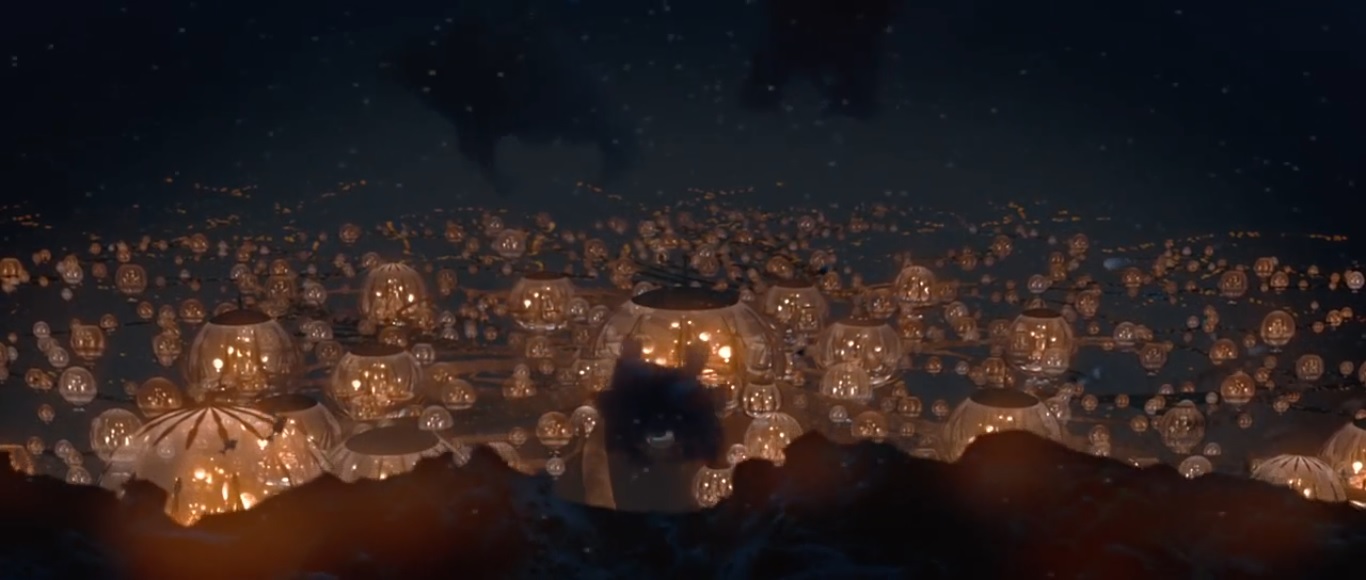
- Qui-Gon touches Jar Jar on the shoulder and uses a Jedi mind trick to get him to "relax", causing Jar Jar to lose consciousness for a short interval.
Obi-Wan suggests he may have "overdone it", however it is also possible that Jar Jar is so simple-minded that he is exceptionally susceptible to it.
- R2-D2 is one of four astromech droids assigned to the mechanical crew of the Naboo royal starship, and due to his heroic actions becomes a trusted
servant of Padme and her extended family, including her husband Anakin, her daughter Leia's adoptive father Bail Organa, and her son Luke.
- Naboo starships, like other starships, employ deflector shields, which are energy fields projected around the hull of the ship designed to deflect blaster
fire, or to absorb some of the energy of impact. Their ability to withstand fire is related to the strength of the enemy weapons and the power
generation capacity of the ship. As a result, they can be depleted by continuous bombardment. If enemy fire penetrates the shield and hits
the shield generator, it can obviously knock out the shield. Without the shield, blaster fire is no longer angled away from the ship, and shots which
do hit are no longer dampened by the energy shield, meaning the full force of the blast is borne by the hull of the ship.
Main Article: Shields, Deflectors, and Ray Shields
- Due to battle damage, the hyperdrive on the Naboo royal starship is "leaking", presumably hyperfuel, or whatever form of output energy the reactor
delivers to whatever devices allow access to hyperspace. As a result, the ship won't make it all the way to Coruscant, allowing only a much shorter trip.
Main Article: Hyperspace Travel
- Tatooine is chosen as a destination, despite being a slight detour, because the Trade Federation has a presence on most worlds of any significance in
the Republic. The Tatoo System isn't particularly close to Naboo, but in galactic terms it is probably one of the nearest non-Republic systems.
- Mos Espa is the de facto capital of Tatooine, and probably its largest city. Like all cities on Tatooine, it has become built up due to hosting a spaceport.
While Qui-Gon describes it chiefly as a temporary hideout for those who don't wish to be found, much of the population seem to be locals.
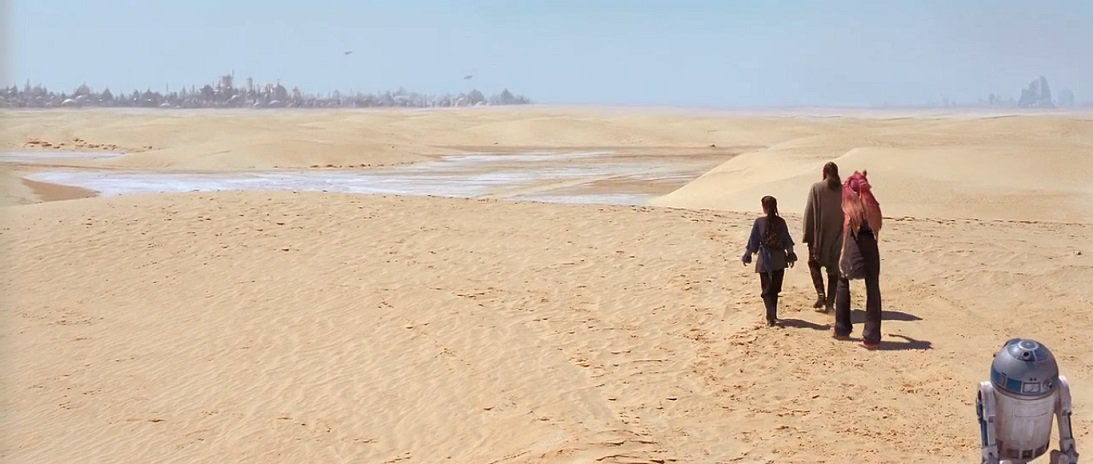
- It's clear that Qui-Gon knows that Padme is actually the Queen, and not one of her handmaidens. It seems likely he was aware of this all along, as
the Jedi are very perceptive and can even sense emotions and at times thoughts. He shows that he is aware of this more directly, when Padme
wishes to accompany him into the city, and even uses her deception against her rhetorically when she objects to his plan at the pod race.
- Anakin says he has been in Mos Epsa since he was three, which would have been six years prior to this film. He was born on Tatooine in 7936 (41 BBY),
and at the time of this film is nine years old. Anakin and his mother were sold to Gardulla the Hutt, but she lost them to Watto betting on pod racing.
- Republic currency, called the Datary or the Credit, is not well-received in the Outer Rim, at least on planets outside of the Republic.
- Mind tricks don't work on Toydarians, regardless of how weak-minded they might be. This is likely true of certain other species.
- Jedi Quinlan Vos is seen to be sitting at one of the tables of the outdoor eatery where Sebulba is eating. This was originally a background character who was
picked out and developed in legendary material as a Jedi, and who appealed to Lucas enough to include him in Episode III. Although his scene was cut, he
was mentioned in the dialogue of the film, and was included in The Clone Wars 'Hunt For Ziro' (S3E9). This original appearance which inspired
the character has since been retconned as an authentic appearance of Vos, who was likely on Tatooine keeping tabs on the criminal underworld.
- C-3PO is revealed to have been assembled by Anakin Skywalker from 3PO-series parts to be a droid assistant for his mother. In Episode IV, C-3PO says that
his first job was programming binary loadlifters, however it is seen in Episode III that his memory was erased at that time. C-3PO says that he was once
the protocol droid for the chief negotiator of the Manakron system, in The Clone Wars 'Evil Plans' (S3E8). Supplementary material has decided that this
was before Episode I, and that Anakin rebuilt him instead of built him. The implication in this film is that Anakin was building him out of junk parts he
could collect here and there, likely many of which came from old 3PO-series droids. His role serving the chief negotiator could have been a temporary
assignment by Padme during the first year and a half of the Clone Wars. It is also possible his memory circuits, personality matrix, or other components
key to his function were salvaged from an earlier 3PO that served in that function, however C-3PO specifically refers to Anakin as "the maker" in Episode II.

The Jedi are emphatic that no one send any reply to the message from Naboo, indicating this would allow the Trade
Federation there to establish a connection trace. In the very next scene Darth Maul says, "if the trace was correct
I will find them quickly." Did someone on board reply? If not, it would mean that anyone could be located by sending
them a message, which would reach them by whatever means messages find their recipients at unknown locations in
the galaxy, and would betray their location to the sender without any reply being sent back. This is a major continuity
error if not explained some other way. When Gunray says that their ship is out of their range to locate, Sidious says
that finding her isn't impossible for the Sith, so the implication is that the Sith have technological or Force-related
ways of locating them regardless of their lack of reply. Nevertheless, Sidious and Maul are on Coruscant, and it
should be clear to them if the message originated there instead of on Naboo. Of course, they may have methods of
disguising the true origin of the signal, then using the Force or some other means to locate them. If this is the case,
it probably causes several continuity issues in other material, although not certainly.
Main Article: Hyperspace Communications
- Sith apprentices are very powerful from a young age, due to utilizing the dark side, which gets them the same results as years of work much faster.
An apprentice Sith Lord who has been well-trained in Force abilities and martial arts is a potential threat to a Jedi of any rank or skill level.
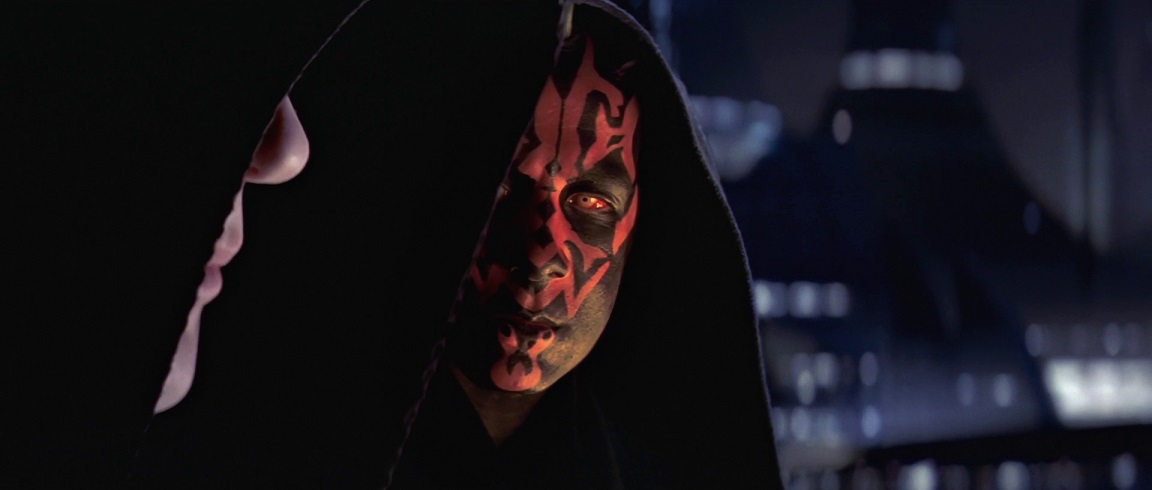
- Some or perhaps most slaves have a transmitter planted inside their body somewhere which can be detonated remotely in the case of attempted escape.
- The Republic has laws against slavery, which are probably fairly-well enforced in the Core. In the Rim, there is probably more illegal slavery going on,
and certainly on worlds controlled by the Hutts or other legally respected independent systems, there is little to no Republic enforcement.
- Lightsabers are "lazer swords", and while they are certainly the most prominent example, but not certainly the only variety. George Lucas used this term
often during production of the original trilogy, and wanted to introduce this term as a less-specific and colloquial term for lightsabers.
- Anakin tells Qui-Gon that "I had a dream I was a Jedi. I came back and freed all the slaves." This was likely a revelation from the Force in dream form, which
was shown to Anakin in order to encourage him along one of his possible paths towards his destiny as the Chosen One. In Episode IV, Luke had fixated on
two different destinies which seemed to be the same destiny, wanting to "become a Jedi, like my father," which subsequently drove Luke's internal conflict
about choosing the light side or the dark side. Likewise, Anakin has a dream of becoming a Jedi, and a separate dream of using power and force to make
things the way he wants them to be. The Force does not have a preference as to how Anakin reaches the destiny he was immaculately conceived for, that
of restoring balance, it only tries to encourage him to desire greatness, which will lead him to his destiny one way or another.
- The Republic has some program or procedure for identifying Force sensitive individuals at young ages, probably run by the Jedi. Anakin's midi-chlorian
count is over 20,000, even higher than Yoda, who is referenced as having a high count himself. The Force abilities of a Force wielder are a combination
of their natural aptitude (based on the concentration of midi-chlorians in their cells), their training and practice, and the knowledge of the Force they
have gained through their training and practice. Children who have a count high enough to effectively use the Force usually manifest at least one Force
based ability without any training at all. In the case of Anakin, his predictive Force skill has manifested at an early age.
- The Boonta Eve Classic is the annual podrace held on Tatooine, not surprisingly on Boonta Eve. Boonta is a holiday commemorating Boonta the Hutt,
and his historically significant victory against a despotic Human-led empire around 25,000 years before this film. On the second day of celebrations
connected to this holiday, two days after this event, the annual Boonta Speeder Race is held on the planet Boonta, also named for this same Hutt,
which is a huge event that draws wealthy enthusiasts from across the Outer Rim and beyond, as seen in Droids 'A Race to the Finish' (E4). No
doubt some podrace spectators will journey to Boonta to attend the big speeder race. The announcer for this year's event is Fodesinbeed Annodue,
who like all Troigs has two heads with individual minds. Fode calls the race in Basic, and Beed calls it in Huttese. During production, the distance
the pods would cover based on their supposed speeds were determined, and a correctly sized course was mapped out, so that what is shown is
accurate to what would be reality if this were not a movie. Some of the eighteen contestants were highlighted by the announcers as being favorites
or particularly notable, and in deleted scenes even a few more are mentioned, yet most of these racers actually performed quite poorly.
These images show the final results for the Boonta Eve Classic of 7945 (32 BBY).


- The bounty hunter Aurra Sing is seen watching the podrace from Beggar's Canyon. She later appears in five episodes of The Clone Wars.

Why couldn't the Jedi free Anakin's mother? The Jedi don't allow children who join them to see their families, as they
are now part of the Jedi family, and attachment is dangerous for Force wielders. This doesn't mean they couldn't have
sent someone to Tatooine later to pay for her freedom. Considering what Anakin earned for them, they kind of owe
him, and the cost should be minimal, as Anakin was accepted as a fair wager for a racing pod, and the Jedi obviously
have an extensive operating budget. Things may not have turned out any different, and this kind of indifference is
characteristic of the Jedi as an order, but it would have helped ease Anakin's mind, and perhaps allowed him to better
focus on his training and letting go of attachments. Considering he had lived with her until the age of nine, which is
already a concern for the Jedi, it might have been a good idea to make an exception to usual practice in Anakin's case.

Qui-Gon destroys one of Maul's 'Dark Eye' probe droids which is trailing him and Anakin out of Mos Espa. His analysis
of the wreckage leads him to conclude that this probe droid is "very unusual". DRK-1 probe droids are a product of
Arakyd Industries, a millennia-old arms and droid manufacturer, who in this time period is on the cutting edge of
probe droid development. This encounter is part of a very short scene which should have been left in the film, as
in the very next scene, with or without the deleted scene, Anakin and Qui-Gon are running towards their ship, and
Anakin tells Qui-Gon he is tired, just before Maul arrives. Without the deleted scene it is unclear why they are running.
- Coruscant is an ecumenopolis, or 'city-world', located in the Corusca Sector of the Core. It is located directly north of the galactic center, since galactic north
is an arbitrary direction determined by a meridian which runs from the galactic center through Coruscant. The planet lies at the intersection of the Metellos
Trade Route, the Perlemian Trade Route, and the Corellian Run, three of the galaxy's most significant hyperlanes, and is the capital of the Galactic Republic.
All of this is the case because Coruscant is (believed to be) the homeworld of the Humans, a primate-like species with a proclivity for procreation and
exploration, who were by far the most dominant species in galactic colonization. Humans had overpopulated Coruscant to such a degree that the entire
surface has been urbanized for over 90,000 years prior to the Clone Wars. The atmosphere and the planet's water cycle are artificially maintained, as
the native ecosystem is gone, and the actual surface of the planet is now entirely buried underneath several thousand levels of city, the majority of which
are fully inhabited. The planet has a population in the hundreds of billions, likely in the trillions, about half of which are Human, the other half being species
from all over the galaxy, as Coruscant is a cosmopolitan cultural center like no other. Its highest level, which appears from the air to be its artificial surface,
is known as Galactic City. While massive amounts of food are produced on some of the sub-levels of the planet, Coruscant relies a great deal on interstellar
trade to meet its daily supply needs. Coruscant was one of the founding members of the Republic, over 25,000 years before this film, and has been at
the center of galactic civilization ever since, serving as the federal planet of the Republic during each of its incarnations, including the current Republic.
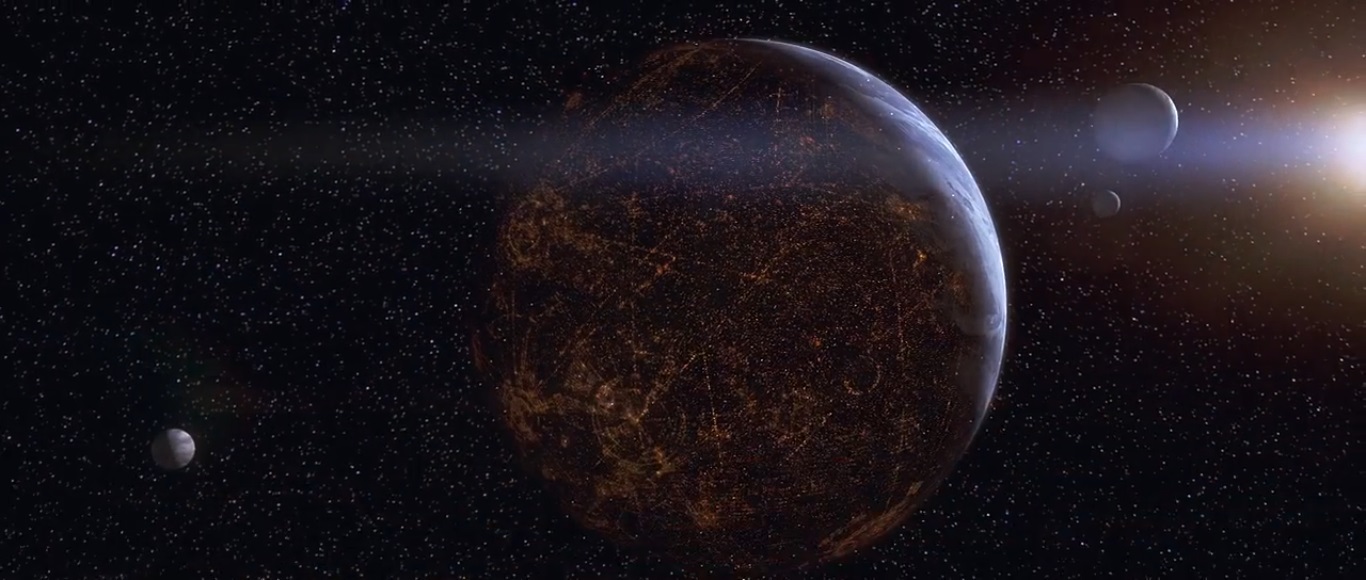
- Supreme Chancellor Finis Valorum is the current leader of the Galactic Senate and therefore of the Republic. According to legendary material, he was elected
leader in 7937 (40 BBY), which if true, means that he is three years into his second five-year term as Chancellor when he is removed by a no-confidence vote.
His ability to lead the Senate has been all but stymied by what Palpatine calls "baseless accusations of corruption," much of which may originate with Palpatine
and his allies. In reality, the corrupt elements within the bureaucracy of the Senate have prevented his attempts to deal with the flaws of the Republic.
- The Jedi Council is presided over by a dozen of the leading Jedi Masters. The proceedings are led by Yoda, who is the current Grand Master, the leader of
the Jedi Order, and Mace Windu, who is the current Master of the Order, the elected leader of the Council. Ki-Adi Mundi and Plo Koon are the Council's
next most senior members, as they would fill Yoda and Mace's positions respectively in the event of a temporary or emergency situation. The other
members of the Council are not necessarily the oldest or most powerful Jedi, however all must be experienced Masters with great abilities as a warrior.
While the members of the Council are amongst the most elite Jedi, there are many Masters who are not on the Council who could merit the position.
As a result, the Council elects its own members based on its own criteria of merit, which helps to keep the Order on a straight path, but also tends to
limit the Council's range of opinions. At this time, the other eight members of the Council are Saesee Tiin, Yaddle, Even Piell, Oppo Rancisis, Adi Gallia,
Yarael Poof, Eeth Koth, and Depa Billaba. Yaddle and Yarael Poof are not seen again, and are presumed to have passed away or retired from the Council.
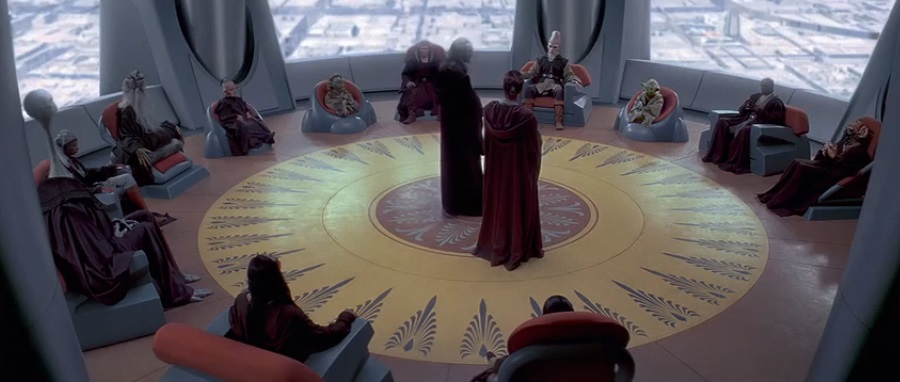
- The Jedi Order is a meritocracy, where authority is based on earned status, which is achieved by a period of apprenticeship to a higher status Jedi, and by
the passing of trials, by which Jedi Padawans can advance to the rank of Jedi Knight. Jedi Knights may eventually advance to the rank of Jedi Master. All Jedi
are addressed with the appellation "Master", regardless of actual rank, and all Knights and Masters are also referred to at times as "Jedi Knights".
- There are a bit more than 1000 pods in the Senate, likely corresponding closely to the 1024 sectors of the Republic. There are around a million planets in
the Republic, but according to George Lucas in 1977, only 24,372 systems are voting members of the Republic which have Senators that could be seated
in the Galactic Senate. This means that each Senate delegation is representing their homeworld alongside, on average, twenty-three other planets with
Senators who aren't present, and many thousands of non-member planets with smaller populations. In The Clone Wars 'Pursuit of Peace' (S3E11),
this body of non-attending Senators is referred to as that sector's "caucus". While it seems certain that each pod only gets one vote, the makeup of
Senate delegations is not uniform. Malastare's pod has three Senators in it, while other pods have one Senator, usually along with their senatorial aides
or sometimes delegates referred to as Representatives. The planet Mon Cala has two pods, one with a Mon Calamari delegation, and another with
a Quarren delegation. It seems likely that these delegations are assigned based on merit by census. The Quarren are a relatively colonial people who have
settled on many planets, particularly in regions of the Rim adjacent to their homeworld. The Quarren delegation may therefore represent a league of
Quarren planets, while the Mon Calamari delegation represents the planet Mon Cala and the Mon Calamari Sector. There also seem to be at least
a few seats for the galactic trade guilds and perhaps other significant components of the Republic that control planets and territory. According to
some material, the Senator announced as being from "the Trade Federation" is actually representing the Quellor Sector where Cato Neimoidia
is located, and the Banking Clan and Techno Union Senators are said to actually represent Scipio and Tibrin respectively, however this is not
established firmly either way in canon. Since the Commerce Guild, Techno Union, Banking Clan, and Trade Federation are franchised trade guilds,
as well as being integral components of the Republic, they may in fact have leveraged seats for their guilds at some point in history.
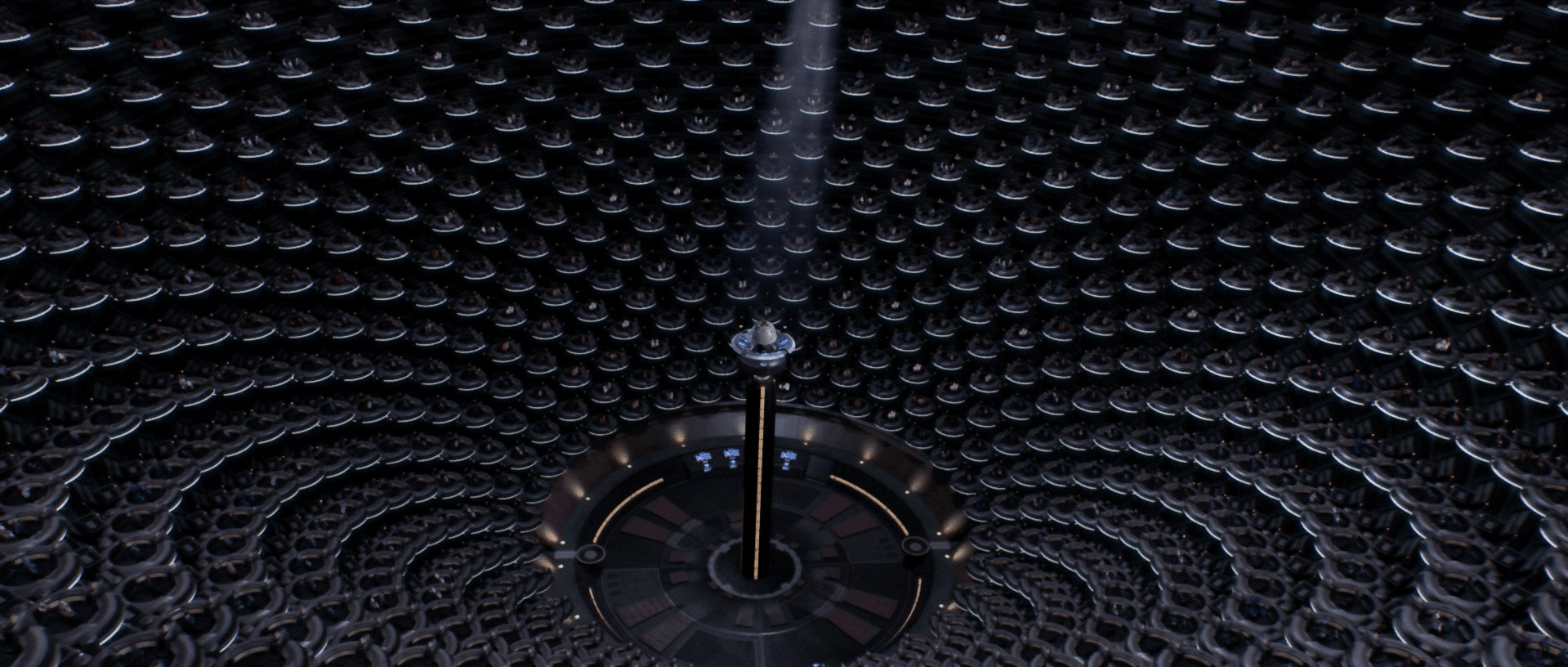
- Aks Moe representing the Congress of Malastare is described by Senator Palpatine as a bureaucrat on the payroll of the Trade Federation.
- The candidates to succeed Chancellor Valorum are Sheev Palpatine of Naboo, Bail Antilles of Alderaan, and Ainlee Teem of Malastare. Palpatine tells
the Queen confidently that he will be Chancellor, due in part to the "strong sympathy vote" generated by the Naboo Crisis, but also in large part due
to the influence of the many Senators under the influence of Darth Sidious, who are the ones which nominated Palpatine in the first place.

It's clear that Queen Amidala frustrates some aspect of Sidious's plan by returning home to Naboo, but why exactly
does Sidious want the Trade Federation to rule Naboo? Earlier he had angrily stated that he wants the treaty signed
which will give the Trade Federation a claim to legal possession of his home planet. He told Gunray the Senate will
have no choice but to accept their occupation, something he tries to convince the Queen to accept as well. Considering
that the Federation is a powerful asset to him, and an important part of his plans for the Clone Wars, it would seem
that after getting him elected Chancellor, it would have been better for them to step back from such a provocative
action. At the same time, this may have been the intended purpose, as this could significantly speed the development of
the crisis in the galaxy, and the growth of the separatist political movement. While getting himself elected Chancellor is
obviously his prime objective, the particulars of his secondary objective are at best unclear following the Queen's victory.
Main Article: Darth Sidious and The Plan
- Anakin, who is nine years old, is considered too old to train as a Jedi by the Council. A child of Anakin's age will have developed too many attachments to
other people, places, concepts, experience, and most of all feelings to be able to readily embrace the selflessness that the Jedi life requires.
- The Jedi Code forbids a Jedi Knight or Master from taking on a second apprentice. This is the Jedi version of the Sith Rule of Two, which is similarly designed
to prevent the issues of competition. In the case of the Jedi, it is also designed to prevent lack of necessary focus and attention on any one student, which
can lead to failure, and in worst case senarios, Dark Jedi. According to legendary material, during the unstable period leading up to the reformation of this
Republic, over a thousand years before this film, many Jedi had a cadre of apprentices, regularly leading to one falling to the dark side.
- Every living cell is connected to the Force, and life could not exist without it. Obi-Wan's and Yoda's description in the original trilogy make the Force sound
like a by-product of life, but Qui-Gon's description indicates that the Force is the source of life, as well as its product. This has endless implications, including
the importance of the will of the Force and the possibility of destiny. This also reinforces the connection between the Force and life. The light side and the
natural are the true nature of the Force, while the dark side and the artificial are unnatural manipulations of the Force.

Why is there only one Trade Federation battleship left to blockade when the Queen returns from Coruscant?
They believe they control the planet, and that there is no threat, especially to their powerful ship, but this still
seems to be the typical case of the fatal flaw of the powerful being arrogance. Certainly, they have plenty of
galactic business to do, maybe even other planets to blockade, but knowing their entire occupation force is
controlled centrally, at least one other ship for the sake of redundancy seems like a prudent tactic.
- Its unclear why the Federation is using centrally-controlled battle droids. It is either because they are expensive to begin with, and the independent models are
more so, or because the independent models haven't been perfected yet. Once the automated B1 battle droids are first seen 10 years later in Episode II, these
centrally-controlled units are no longer seen. Based on what we have seen of other droids in this era, fully automated battle droids which can perform tasks other
than battle, such as man ships, make repairs, and act as a low-quality police force, may not have been fully developed yet at this time, but this is not certain.
- When Padme returns to Naboo, thwarting part of Sidious' plan, he alters it, and suggests that wiping out the Queen along with the Gungan and Human
resistance would work to their advantage. This would effectively eliminate all short-term threats of uprising, while at the same time decapitate
the Naboo government. Federation control would become a matter of fact, and while it can be politically defended in the Senate and in the Courts,
the underhanded violation of a member world's sovereignty will almost certainly inflame tensions with the many worlds which are already being
victimized by the trade route taxation of the Trade Federation. Forcing Naboo to sign a treaty accepting the unreasonable trade taxes would lead to
outrage on worlds across the galaxy, and hasten the political crisis that led to the forming of the Separatist Alliance.
Main Article: Darth Sidious and The Plan
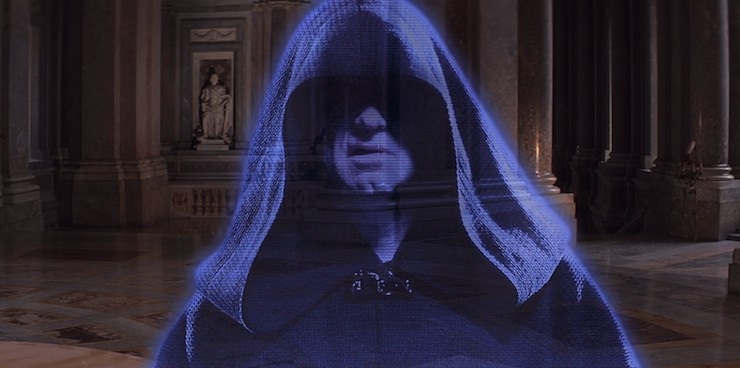
- The Queen's ship is detected coming into orbit and landing on Naboo, likely by the Federation battleship, however it is also possible and even likely that Naboo
has some kind of official monitoring of traffic in the atmosphere or in near orbit.
- The Gungan army uses a defense shield produced from large generators which have to be hauled to move. This type of local, on-planet defense shield protects
against energy weapons, explosives, and projectiles, but does not stop slower moving objects from passing through it.
Main Article: Shields, Deflectors, and Ray Shields
- The Naboo Royal Fighter Corps flys N-1 starfighters, which are craft designed by Nubia Star Drives, like the rest of the high-end craft used by the planet. This is
quite evident from their usual design elements and performance parts. According to supplementary material, these Nubian starfighters were manufactured,
or at least assembled, by the Theed Palace Space Vessel Engineering Corps.
- Darth Maul was able to effectively stand up to two Jedi at once, and an individual Sith Lord is powerful enough to defeat an experienced Jedi Master.
A Sith Lord is also not invincible, but is capable of winning a fight against nearly any Jedi, making two Sith Lords a threat even to thousands of Jedi.
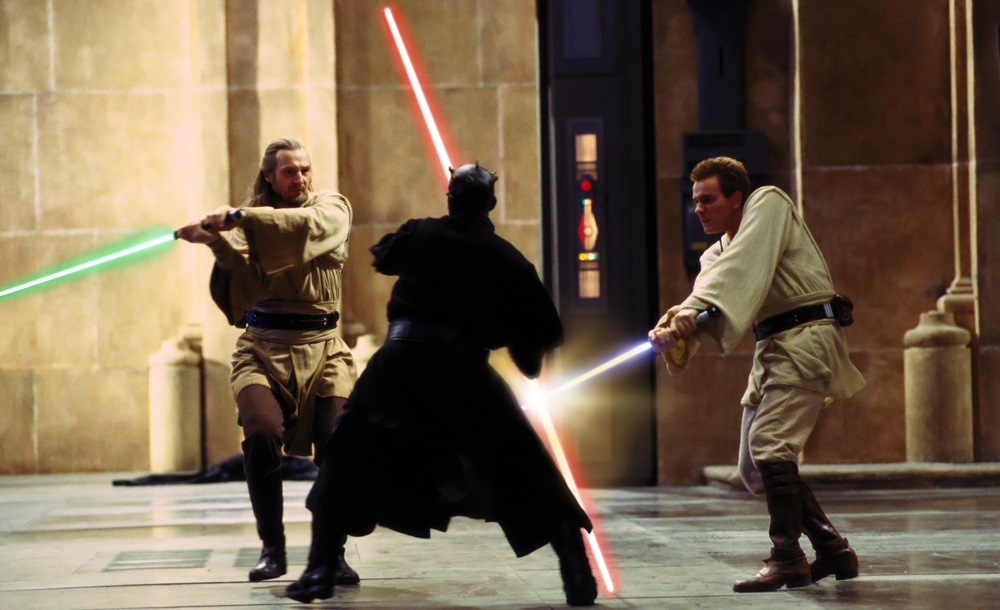
- The facility adjacent to the hanger of the royal palace, where the Jedi fought Maul, is the power station for Theed, the capital city of Naboo. It is a plasma power
generator, which takes advantage of the rare conditions within the core of the planet to provide massive amounts of power.
- Lucrehulk-class battleships have deflector shields which are too strong for the blaster cannons on the N-1 starfighters to penetrate. This means that even with
continuous bombardment they will not be able to significantly deplete the shield, which is able to reflect much of the fire without having to absorb the energy.
Main Article: Shields, Deflectors, and Ray Shields
- Jar Jar may have some low-level connection to the Force beyond that of the typical individual. He may also just be so true to his own nature, and such an honestly
simple person, that the Force easily leads him about. Either way, he is an empty vessel through which the Force acts, meaning his mistakes often cause fortunate
accidents, or haplessly aide evil plans. This is seen in this film, Episode II, and in several examples seen in The Clone Wars.
- Obi-Wan has his first duel with Maul, which began with Obi-Wan fighting alongside his master Qui-Gon, who is killed. As a result, Maul gets the upper hand, due
in part to Maul's power and abilities, but also due in part to Obi-Wan being unbalanced by his anger. Only when Obi-Wan centered himself and concentrated
through the Force does he find victory. Maul is cut in half, and falls down a large shaft. While presumed dead, his physiology and unnatural dark side abilities
allowed the top half of Maul to survive, as seen in The Clone Wars 'Brothers' (S4E21), which takes place over twelve years after this film. Lucas had a plan
for Maul with artificial legs to have been the Dark Lord of Sith in the sequel trilogy, however disney abandoned those films, and killed Maul off, precluding those
stories from being included in canon. Maul is killed by Obi-Wan on Tatooine thirty years after this film, in 7975 (2 BBY), seen in Rebels 'Twin Suns' (S3E20).
- Jedi Knights have a certain amount of independent authority that comes with their accredited position. Following in the footsteps of his Master, Obi-Wan
suggests he will train Anakin even without the permission of the Council, and since this would be following the Jedi Code, the Council would have to accept
it even if they told him not to. It might not be a great career move, but it is within his right as a Knight to take on an apprentice.
ANALYSIS
The issue which led to the Naboo Crisis is the taxation of trade routes to outlying star systems, which are being disputed. Powerful trade franchises based in
the Core, most of all the massive Trade Federation, are apparently levying unreasonable tax rates to planets in the Rim, as authorized by the Senate, where
the power of the greedy and corrupt interests is sufficient to override dissenting voices. Naboo has apparently refused the rate hikes, prompting
the Federation to blockade the planet until restitution has been made. The Federation expects the crisis will not be resolved, and that they will be able to
eventually take control of Naboo. The Federation is a powerful organization that wields great political and economic influence due to its importance to
galactic commerce. It has grown so large and powerful it is exerting that power to undermine the sovereignty of Republic worlds. Its large Navy and droid
Army, ostensibly for the defence of legal trade, are also a formidable offensive weapon. The Jedi are used by the Republic Senate, in particular its leader,
the Supreme Chancellor, as ambassadors. The Jedi are seen as impartial negotiators and fair arbiters, and are also used as a threat, as they are the Republic's
defenders and most powerful warriors. Qui-Gon believes the negotiations will be brief and that Federation's leaders are cowards, suggesting that disputes
of this kind usually go this way, out respect for the power of the Jedi, and the power of the Senate to revoke trade franchises. He describes their move to
invade Naboo as an "odd play". It is clear that despite the power of the Trade Federation, the Senate's power to license the activities of trade guilds has in
the past restrained their hand to some degree, and yet as their armies are described as "battle-hardened". It seems they routinely have legal or semi-legal
reasons to employ their armies to enforce treaties, protect their trade routes and interests, or to seize control of worlds of value which are not being
watchfully protected by Republic member worlds. As often happens with huge mercantile concerns licensed by a government during colonial periods,
the Federation has become more of a hindrance to progress and development, and is now an archaic structure which refuses to yield influence.
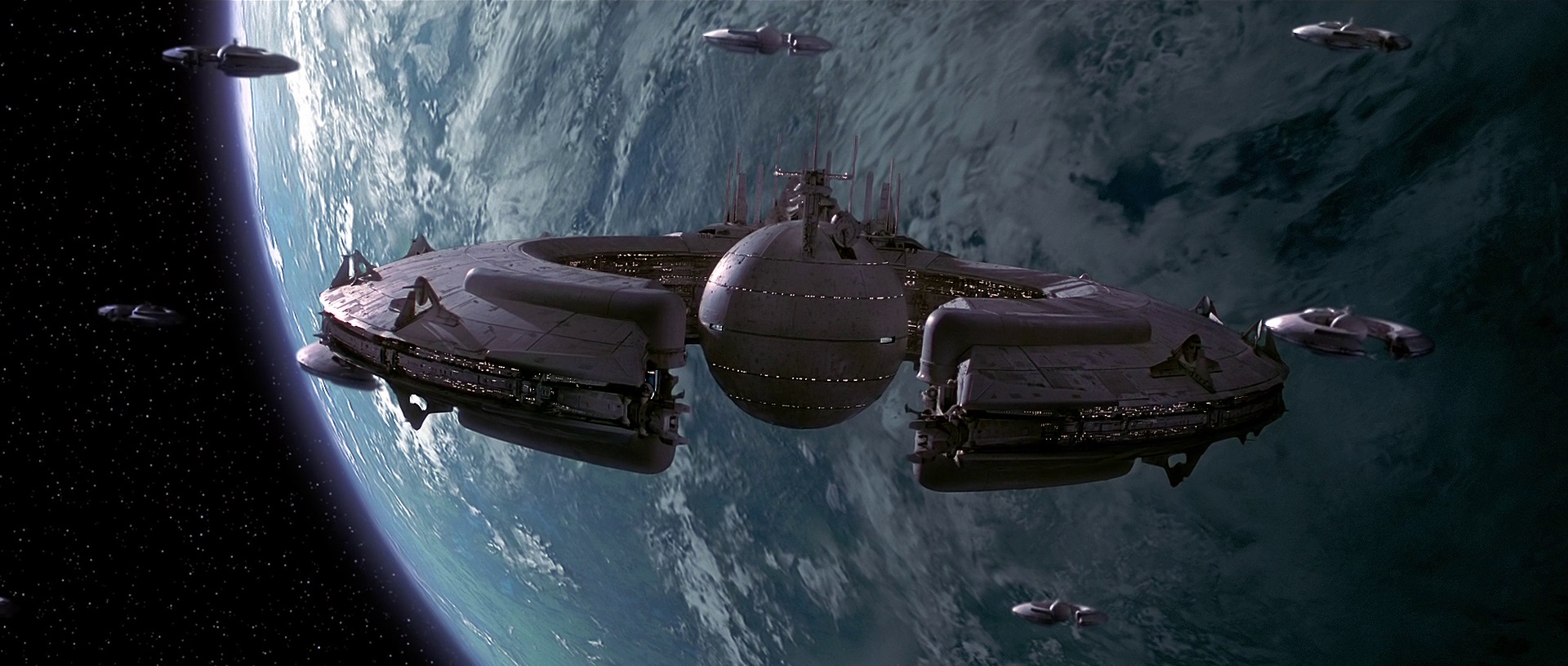
Darth Sidious' influence over Gunray and the Trade Federation seems to be relatively new, and yet it is clear that Sidious' influence over the Senate
is significant, meaning that influence must be the product of many years of manipulation. The Sith leverage their power, and the resources they control
through that power, to manipulate the greedy, the fearful, the guilty, and the opportunistic. In the case of the Trade Federation, it is clearly greed, as the
Federation is already excessively powerful within the Republic, and its leaders exceedingly wealthy. The Sith prefer to operate from the shadows, acting
as the power behind various thrones, and manipulating seemingly disconnected events to suit their greater plans. They do this partly to conceal themselves
from the Jedi, but also as a necessary and effective tactic for their plans. They intervene personally only as required. Their reemergence into public view,
and therefore view of the Jedi, is a deliberate and important part of Sidious' plan to defeat the Jedi. The return of a shadowy external menace devoted
to the dark side will occupy the Jedi's vision, and keep them from looking to close to home for the source of the trouble. The Jedi will correctly assume
that Maul was working for a Sith Lord, and that the Sith are attempting to once again destabilize the Republic from the outside rather than from within.
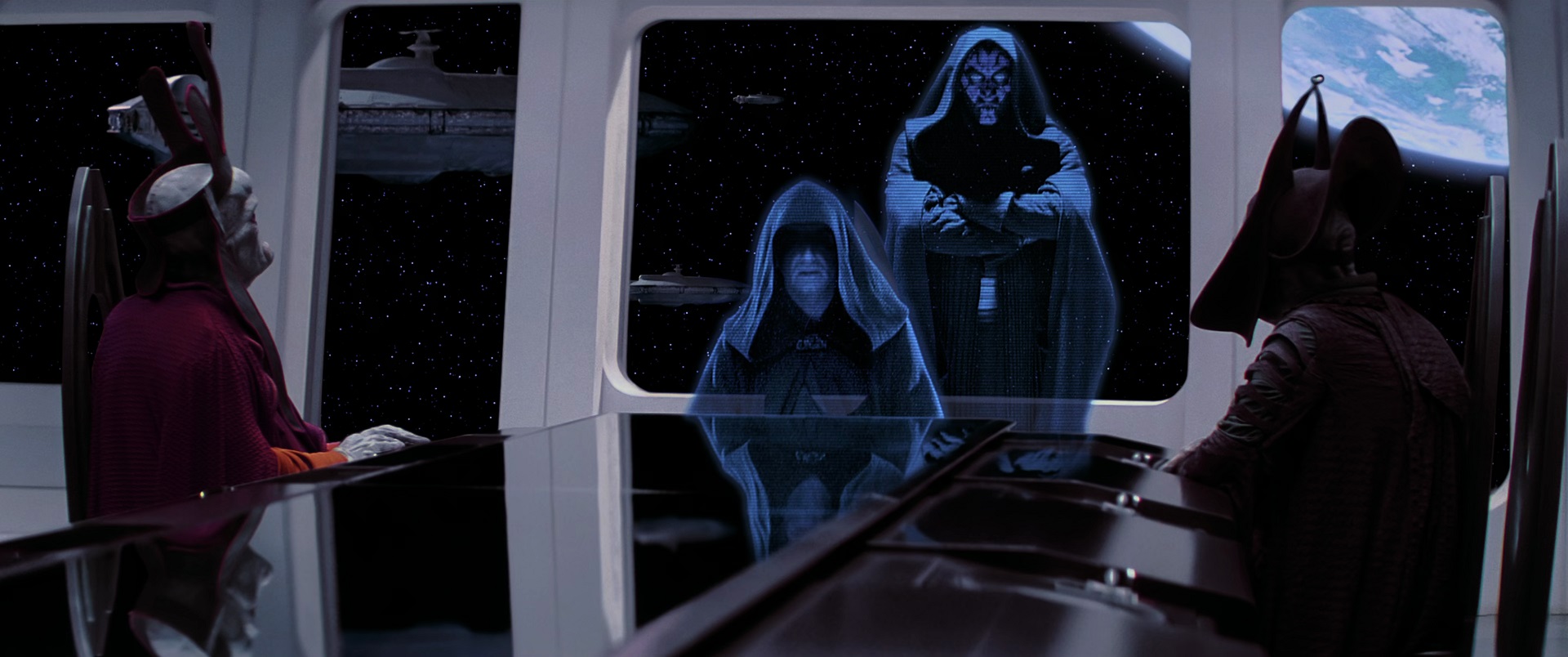
Naboo has a Queen, and while we learn later that she is elected, it is clear that there is a great deal of individuality and independence which member worlds
have in the Republic. The Republic isn't a uniform and fully integrated federal republic, with different planets as provinces. Rather, it should be seen as more
of unitary federation with planets, sectors, interplanetary nations, and territory-controlling commercial interests, all supervised by a central authority.
Each of these different member entities may differ greatly in size, population, culture, resident species, economic activities, and political importance.
Some Republic worlds are seen in other canon to be absolute monarchies, or different but only semi-democratic arrangements. The Gungans clearly have
a history of interaction with the Human population, as well as an unfavorable view of the superiority-complex common to Humans. They see little difference
between the technologically advanced Humans who colonized their world long ago, and the technologically advanced droid army of the Trade Federation.
To them they are all aliens who think they are superior to the planet's native population. The Gungans have a large army, which is why Jar Jar suspects that
the Naboo don't like them, which is probably a prevalent attitude amongst the Gungans, one that has developed reciprocally based on typical Naboo attitudes
towards them. The original Naboo hostility towards the strange natives who lived on the planet probably led to the Gungans improving their technology
and military out of fear. This in turn has led the Naboo to fear the Gungans even more, and the Gungans to further dislike the Naboo in response. This kind
of Core-centric and Human-centric colonial history has been a significant component of making the Republic what it is, which is part of why it wasn't ever
a truly democratic institution, even in time periods when the political machinery still worked. The Gungans, and many others in similar positions in the galaxy,
just want mutual respect. When Padme shows that she desires to see the Gungans as equals, and to be truly democratic, the Gungans are happy to work
together with the Naboo. The Gungans have been ignored and even shunned due mostly to prejudice, even though the Gungans are in reality quite advanced.
Gungan engineering is impressive, and shows elements of the priorities of an amphibian species. It is unclear whether the Gungans developed their technology
prior to the colonization of their world, or at some point after making contact with the Human-dominated intergalactic community. The Neimodian leaders
of the Federation consider races like the Gungans to be "primitives", suggesting that species that are fully integrated into the Human-dominated interstellar
culture of the galaxy see themselves as culturally superior to seemingly less developed species, as many Humans seem to. This may be particularly true of
species from the Core which have been part of the galactic community for thousands of years, like the Neimoidians, in relation to cultures on outlying worlds.
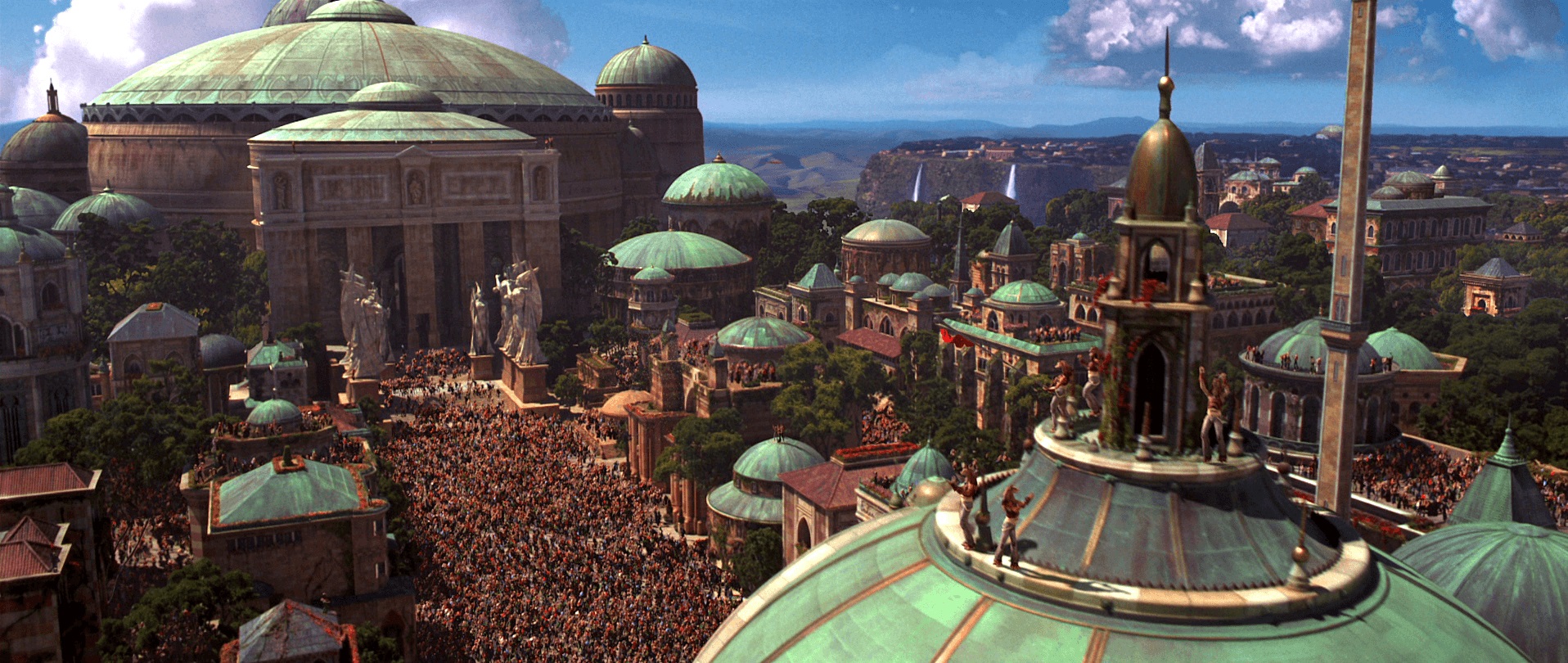
Despite the many problems facing the Republic, the long reach of its stability and prosperity extends even to outlying worlds that aren't in the Republic.
Even a poor and remote world like Tatooine, with crime and slavery and numerous other shortcomings, enjoys the free and relatively safe movement of
beings, public events like pod racing that attract competitors and spectators alike, and an element of the civil society present in the Republic.
The Galactic Senate clearly does not have a Senator for every world in the Republic. The Senate has become deadlocked by rival camps of delegates
representing greedy and powerful interests, and they squabble over petty minutia. They have become increasingly detached from any focus on the interests
of the public. The Supreme Chancellor is unable to wield any real authority over the Senate due to the influence of the bureaucrats and the large interests
they actually represent, rather than the people of the planets they are from. Senator Palpatine suggests that a stronger Chancellor could control
the bureaucrats. This is probably only true if that Chancellor is willing and able to control them by enabling and feeding the corruption they desire,
by blackmail and extortion, and by shrewd political wrangling. To fully master the Senate and the huge interests within the Republic, the kind of insight
and prophetic knowledge that vision through the Force can bring is all but required. The issue at the heart of the Naboo crisis is the taxation of trade
routes, which seems to have been a relatively recent allowance by the Senate. It seems despite the inability for the Senate to pass meaningful legislation,
it is still quite able to pass bills that serve the large economic interests like the Trade Federation, and line the pockets of corrupt senators. It is likely that
Sidious began this crisis by ordering the Federation to impose unreasonable tariffs on Naboo, leading to a refusal to pay and a Federation blockade.
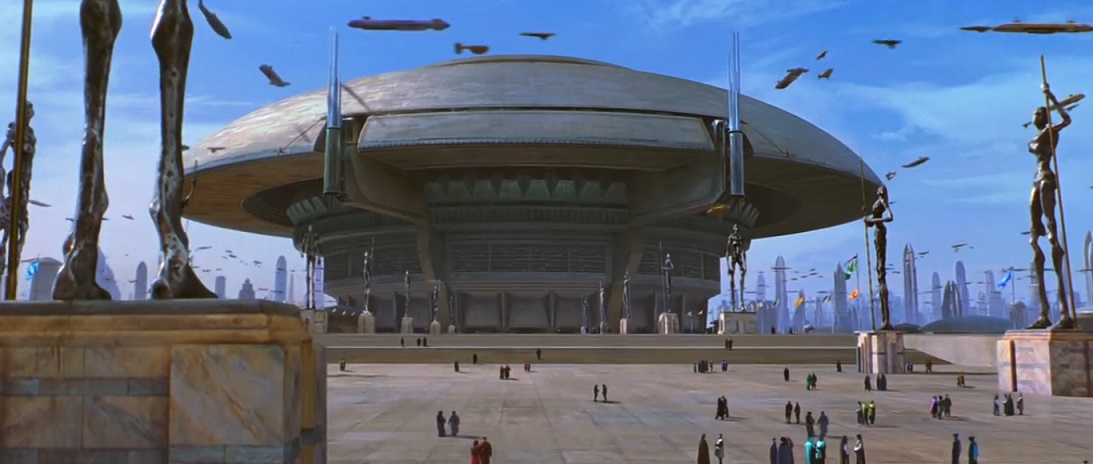
It has been around 1000 years since the Sith were defeated and presumed extinct. The Jedi are skeptical that the Sith have returned, but most members of
the Council seem willing to believe it is possible. Mundi's reaction shows the dept of the historical 'certainty' that the Sith were wiped out in the first place,
a testament to the success which the Sith have had in remaining hidden from the Jedi and limiting their number to two. Mace's reaction shows the confidence
which many Jedi have in the power of the Order's vision through the Force, giving them a false sense of security. This is understandable given the potential
scope and power of Force vision, which is made clear in the discussion of the prophecy of the Chosen One, who will bring balance to the Force. It is unknown
exactly how long this prophecy has been around, but Force prophecies are clearly regarded by the Jedi as true visions from the Force as trustworthy as those
related to the present or near future. Despite the supposed demise of the Sith, the Force has been growing increasingly out of balance, which has even begun
to effect the vision of the Jedi. The phantom menace posed by the Sith, having spent a millennium developing their power within the underworld and corrupt
elements of the Republic, is causing the power of the dark side to grow without being checked. The Sith have become far more powerful as two Lords working
within the Republic than they ever were as many leading external Sith empires against the Republic. Darth Sidious already has so much influence over the Senate,
the trade guilds, the underworld, and within important private sector interests, that his election as Chancellor has essentially already made him the ruler of
the galaxy, despite being unseen. The timing of Anakin's immaculate conception by the Force seems to be no coincidence, as the Jedi have correctly discerned
from the prophecy that the Chosen One is destined to bring the Force back into balance, one way or another. It is not too late for the Jedi to stop Sidious, as
it will quickly become once the Clone Wars are in full swing, but their overconfidence about their ability to sense the dark side prevents them from looking for
the Sith threat from within, and certainly not from the kindly and cooperative Palpatine. While not all of the Council are convinced Anakin was conceived by
the midi-chlorians, his undeniable strength in the Force is a great concern, and even a potential threat to the Order. Obi-Wan, like much of the Council, sees
him as dangerous, or at the least as having an uncertain future, as Qui-Gon recognizes but does not fear, trusting in the will of the Force.
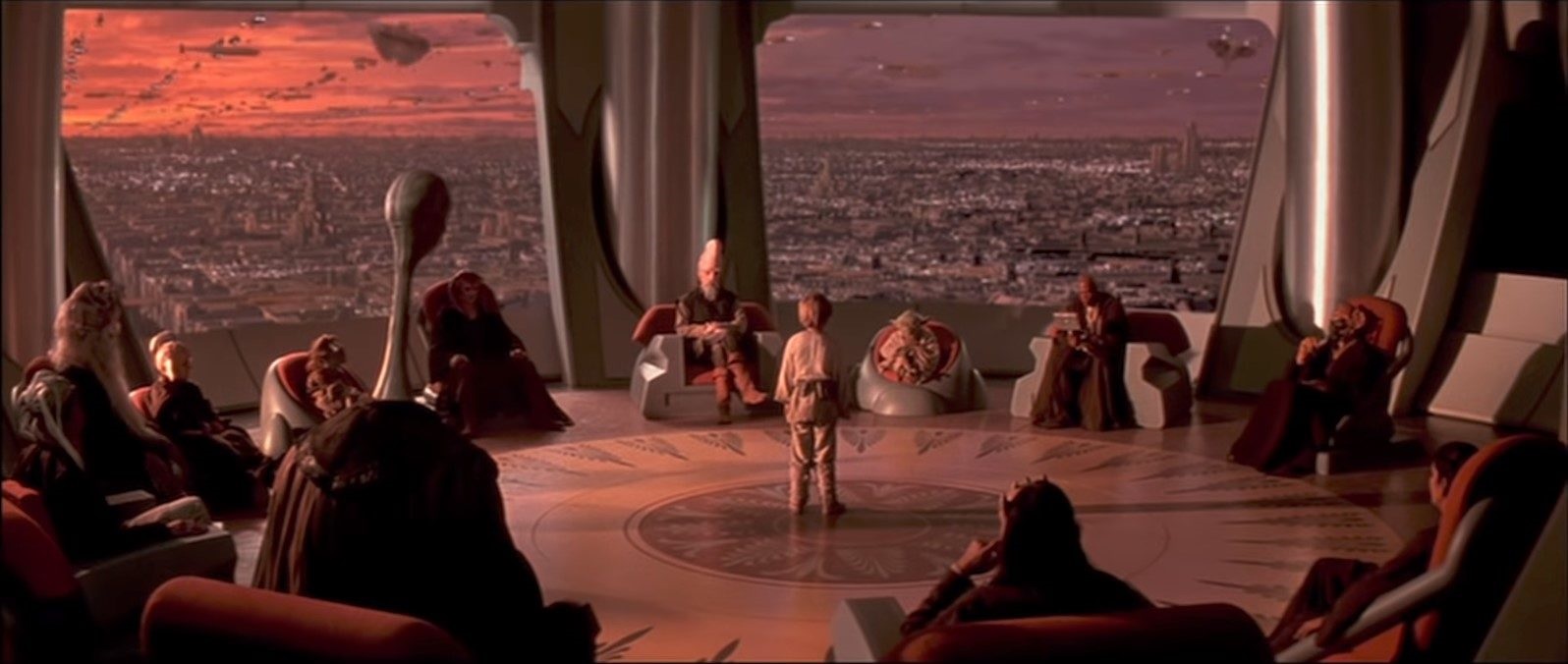
Qui-Gon is experienced, respected, and powerful enough to be on the Jedi Council. Membership on the Council is based on merit for the position, but also based
on the decision of the seated members. Qui-Gon represents an archetypal Jedi, and as such is more devoted to will of the Force than he is to the Jedi leadership.
He is no less a believer in and adherent to the Jedi religion, but has found occasion to depart from the Order's chief doctrine, the Jedi Code. Jedi such as Qui-Gon
believe correctly that the Order's position as defenders of the Republic and its political ideals regularly leads to conflict with central premises of the Jedi religion:
that the Force is good, and that the will of the Force should be divined and followed. The Jedi Council has always been willing to compromise their values in
the service of an imperfect Republic which they see as the greater good. As a result, Qui-Gon is once again at odds with the Council regarding Anakin, as he remarks
that "finding him was the will of the Force, I have no doubt of that." As usual, Qui-Gon cares more about following the Force than the pragmatic concerns of
the Council, and proves himself a more pious adherent to the Jedi religion than the clerics leading the Order. When Obi-Wan questions why he is again jeopardizing
the advancement of his career and authority, Qui-Gon tells him that he still has much to learn. Just as Yoda does not yet understand Qui-Gon's wisdom, Obi-Wan
has failed to understand all of what his master has been trying to teach. Qui-Gon only noticed Anakin because he tends to pay attention to the subtle things, those
that others will miss, even Jedi, realizing that they are often the most important. The complication of this slave boy to the mission had led Obi-Wan to remark that
they had "picked up another pathetic lifeform," a reference to Qui-Gon having earlier taken interest in Jar Jar Binks. Qui-Gon noticed that he may be of help to them,
and his instincts led to Jar Jar being there to offer Padme a possible solution to the crisis, and to help form the alliance with the Gungans. Qui-Gon's spiritual path
is one which seeks to appeal to the Jedi's most noble ideals. He mentions that "greed can be a powerful ally", as Qui-Gon prefers to use the dark side's weaknesses
to subvert its goals, rather than to confront it directly, which feeds the conflict the dark side seeks to fuel. This is precisely why Qui-Gon's spiritual achievement of
preserving himself after death befits the Jedi ideals so perfectly, as it will provide a means for Obi-Wan and Yoda to ultimately defeat the Sith by superior
enlightenment, rather than direct confrontation. The path which Qui-Gon advocates eventually leads to the salvation of the Jedi Order.
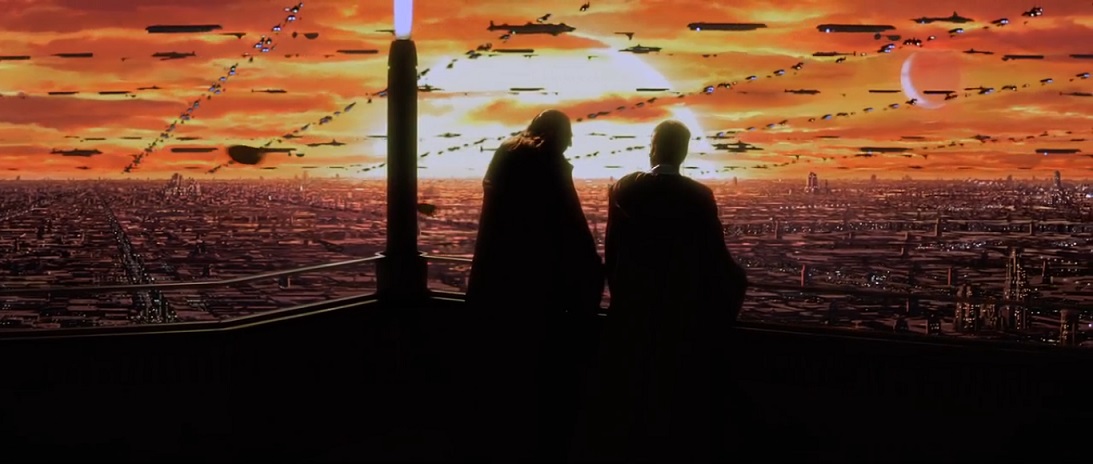
FURTHER ANALYSIS
The Incredible Invisible Practical Effects Minatures Used to Create the Star Wars Prequels
It's Time to Start Appreciating Jar Jar Binks